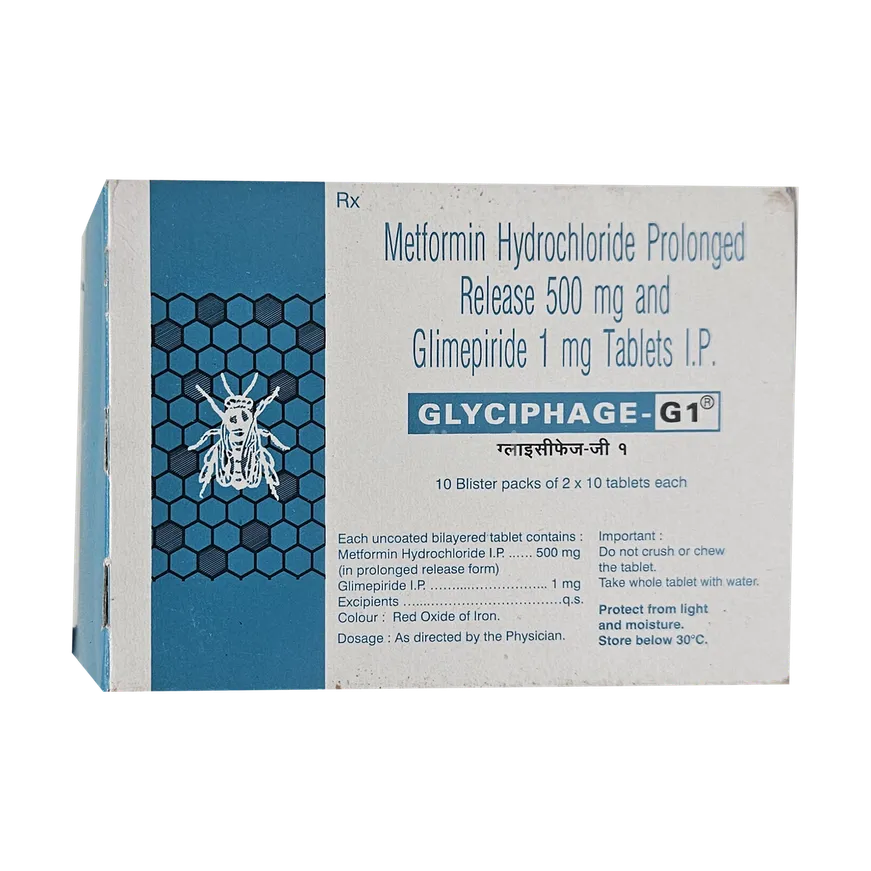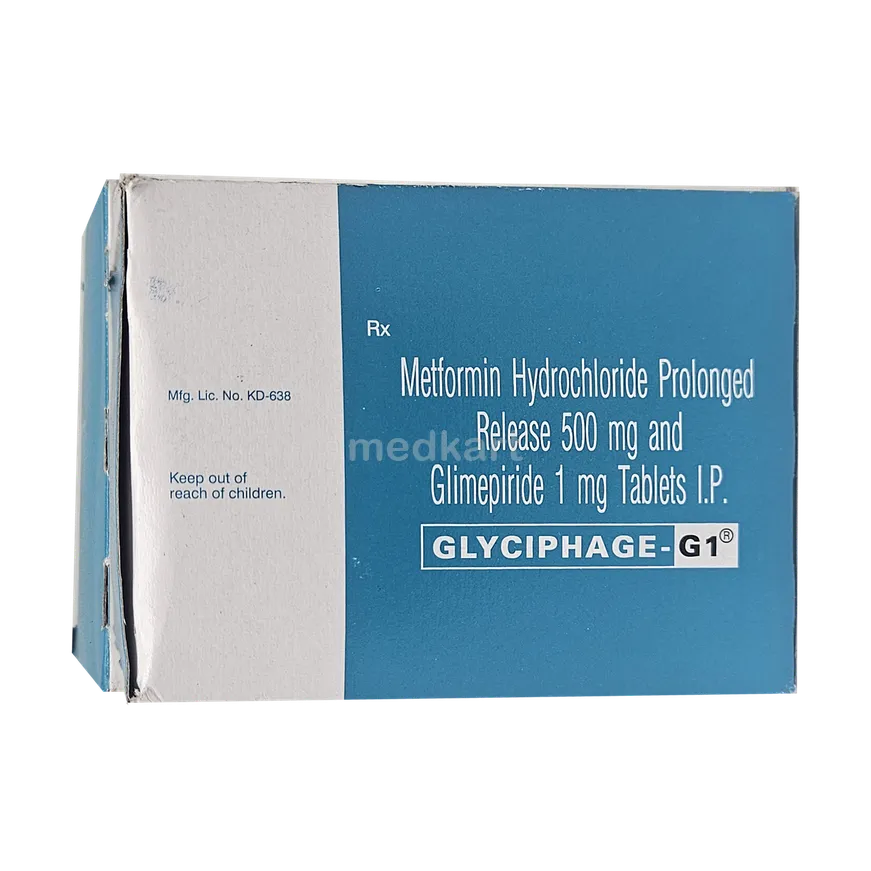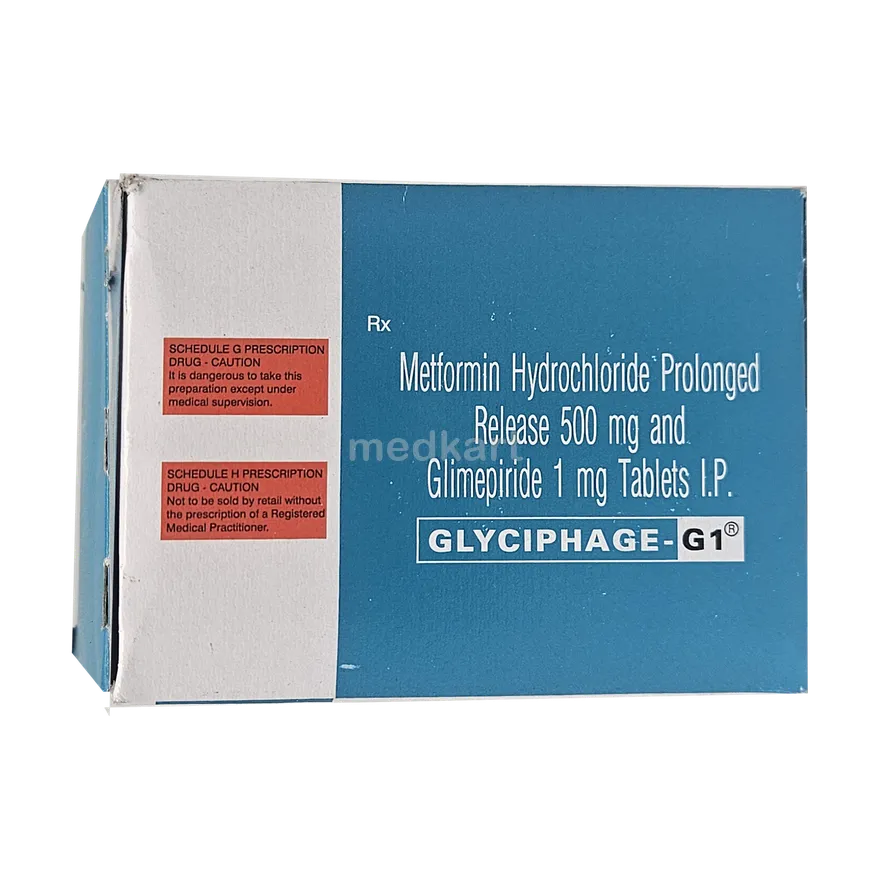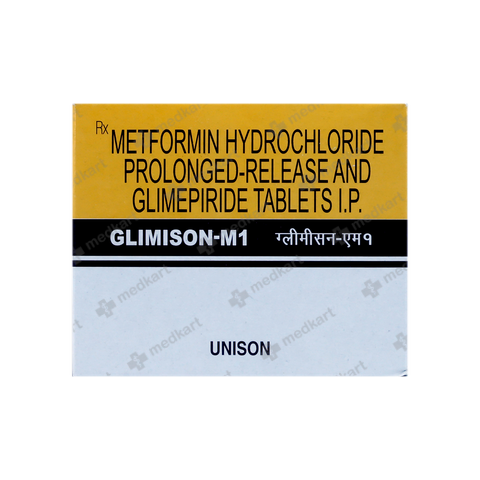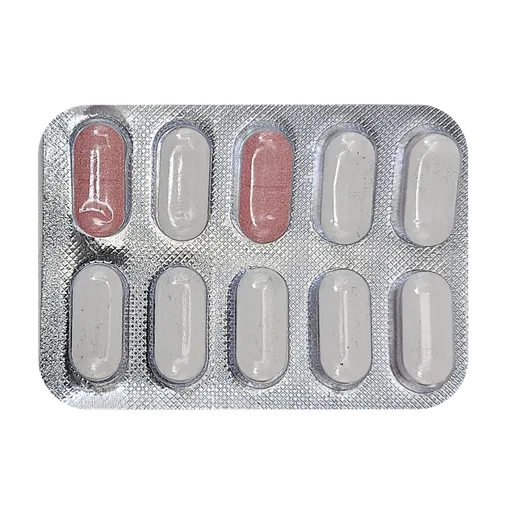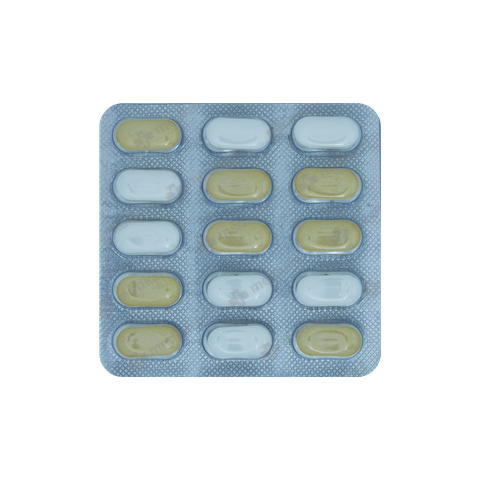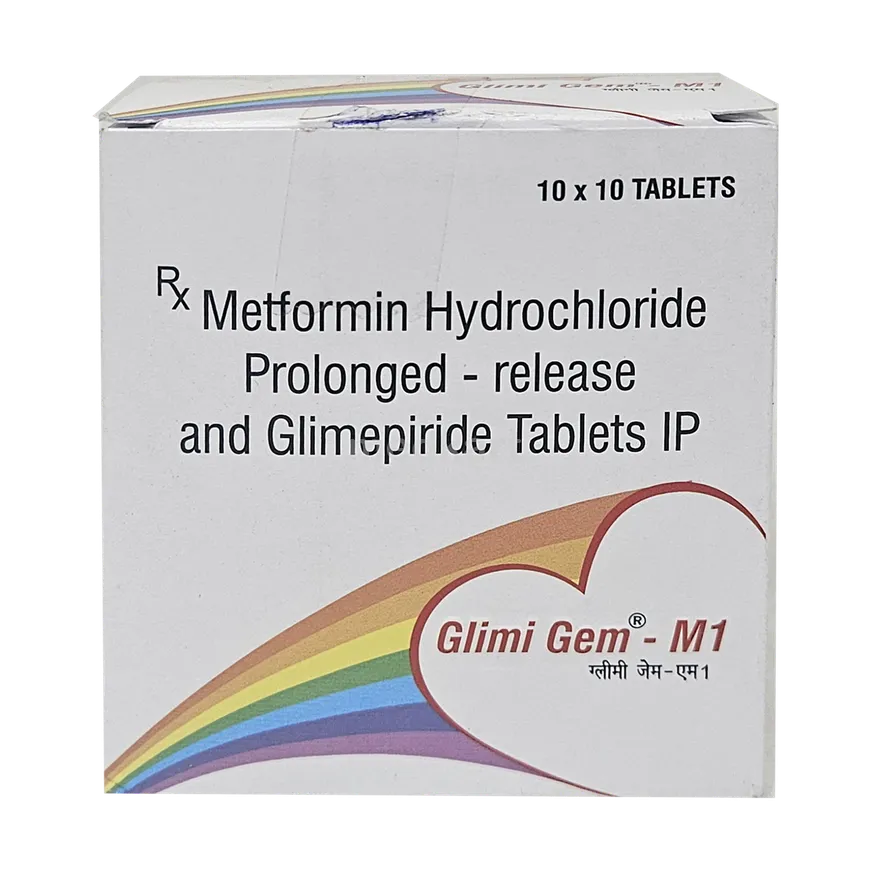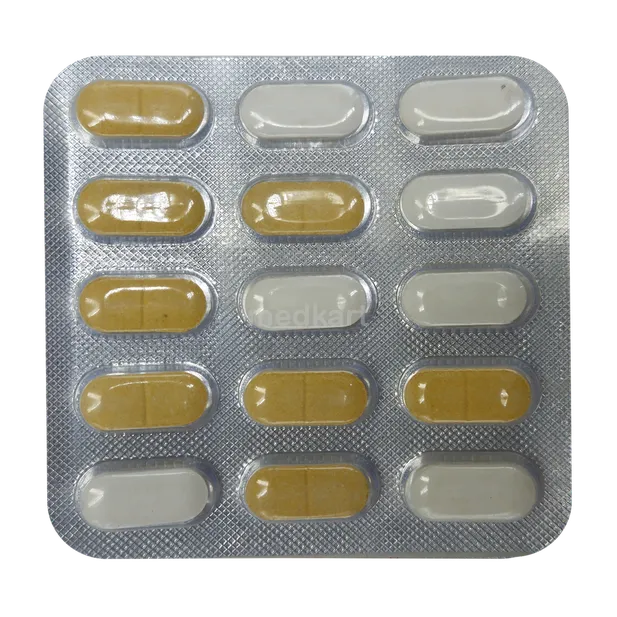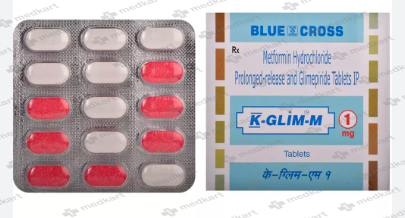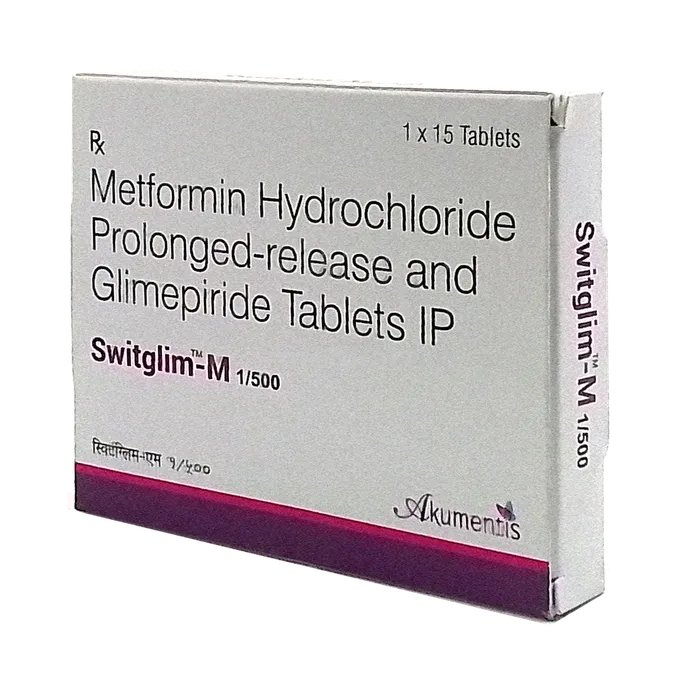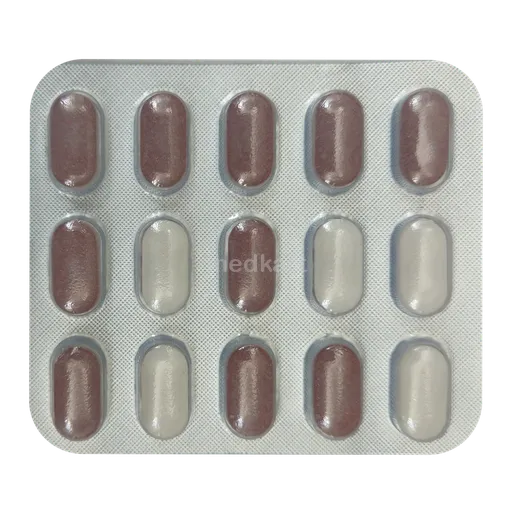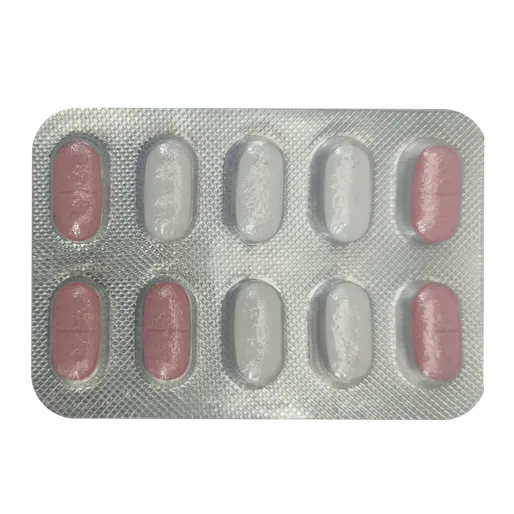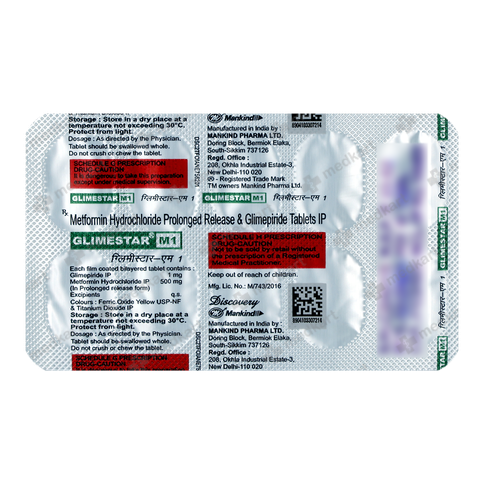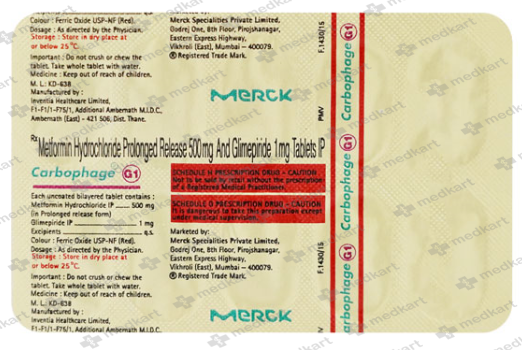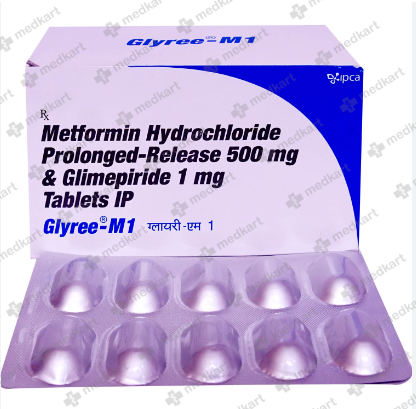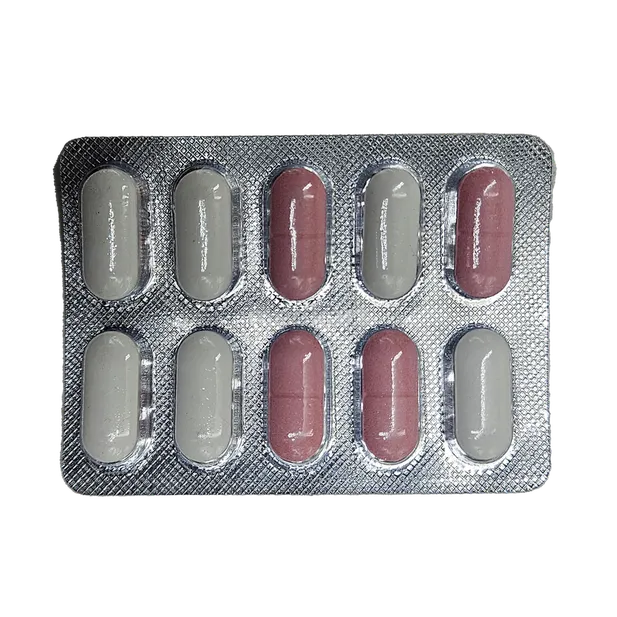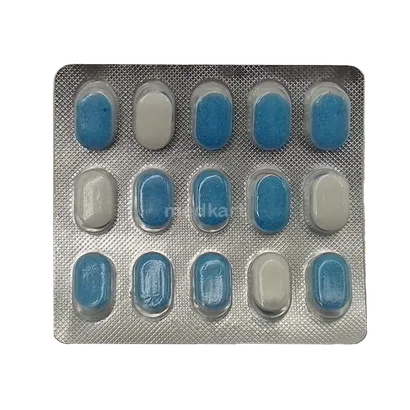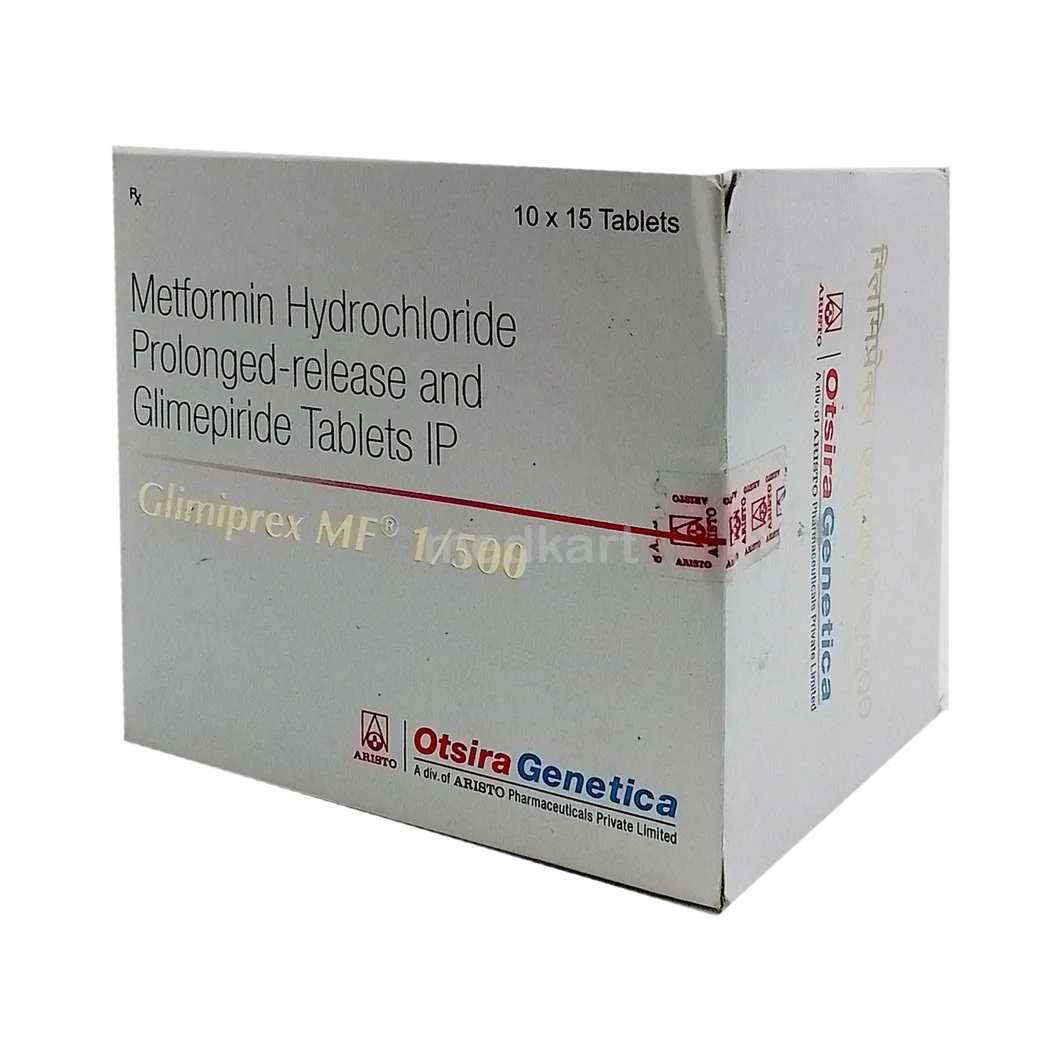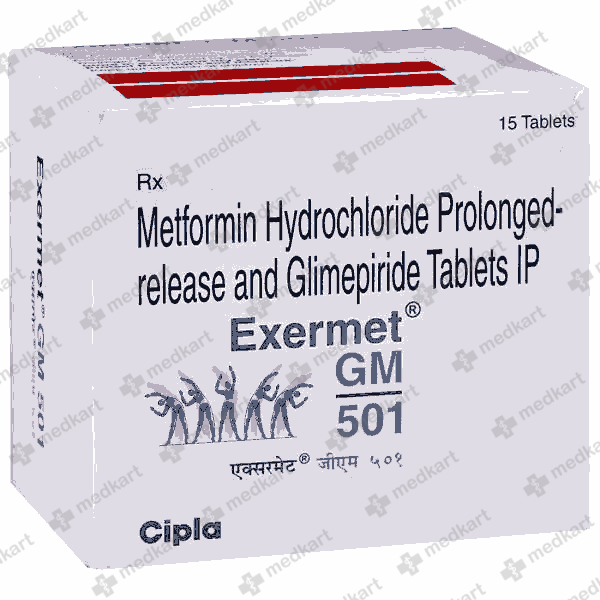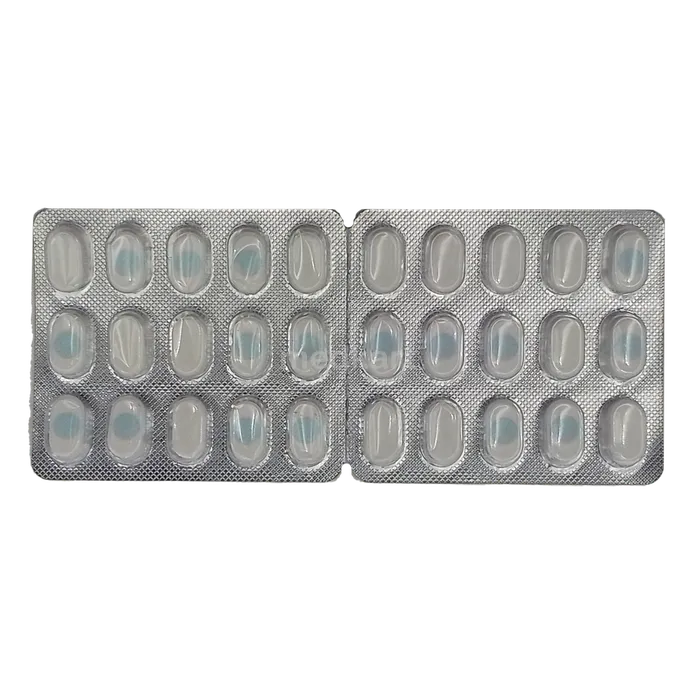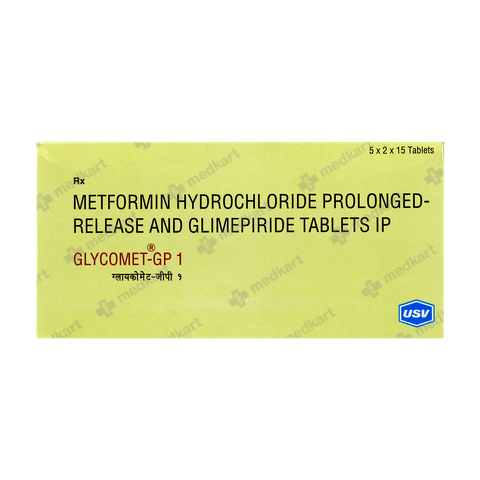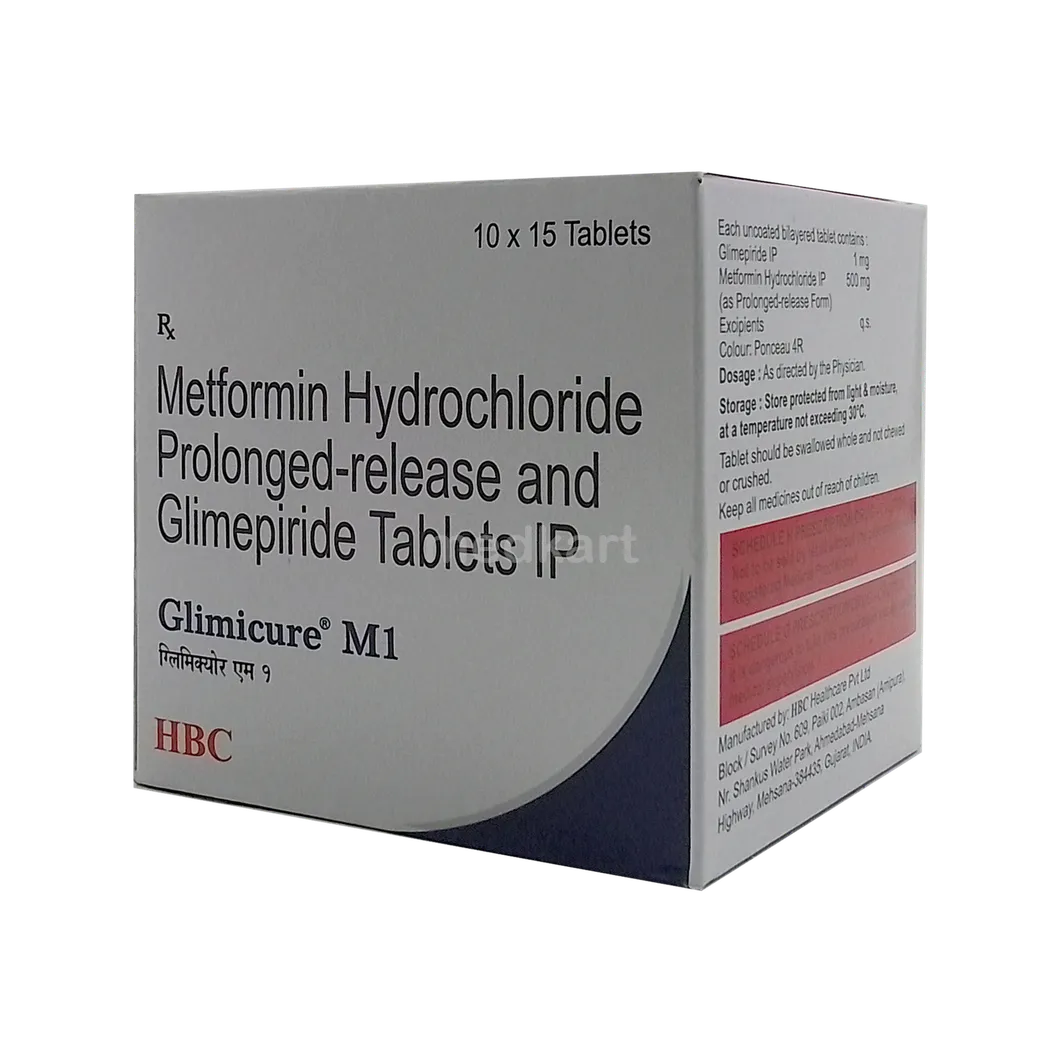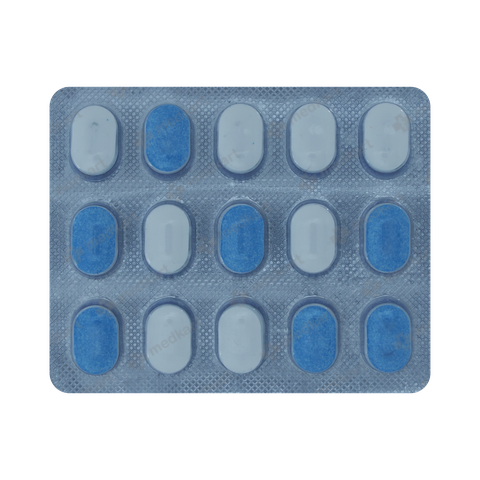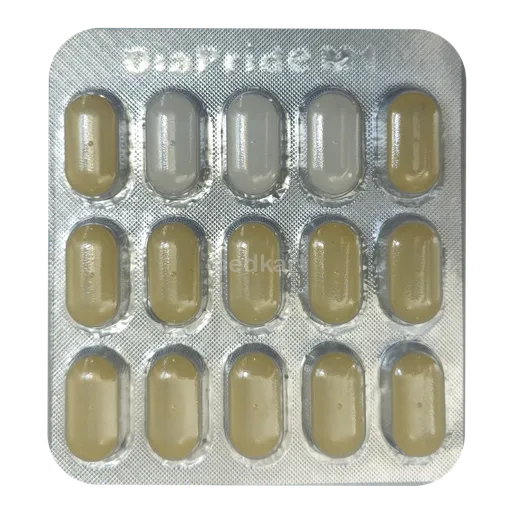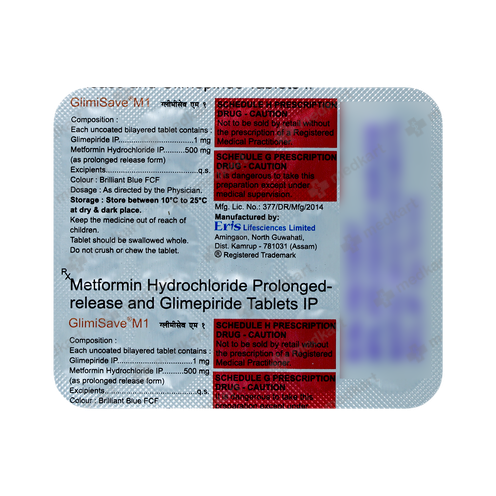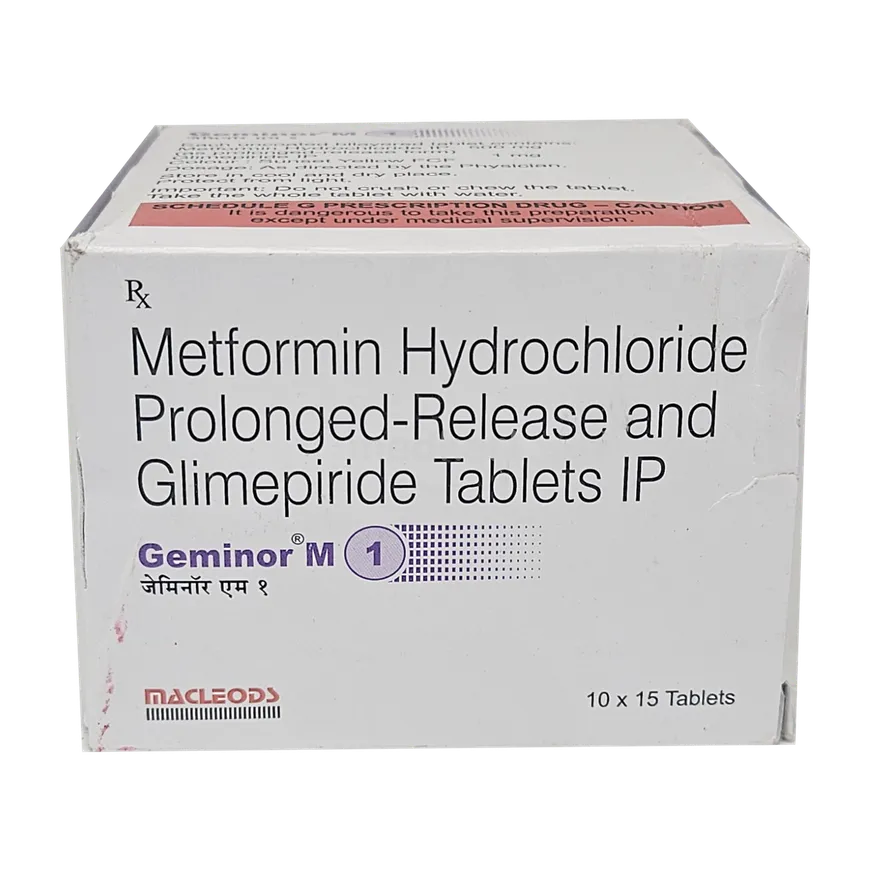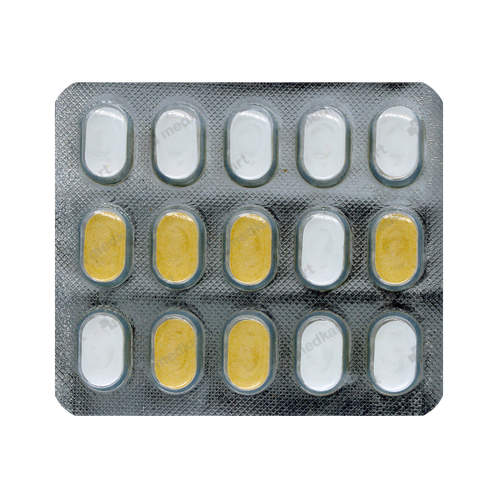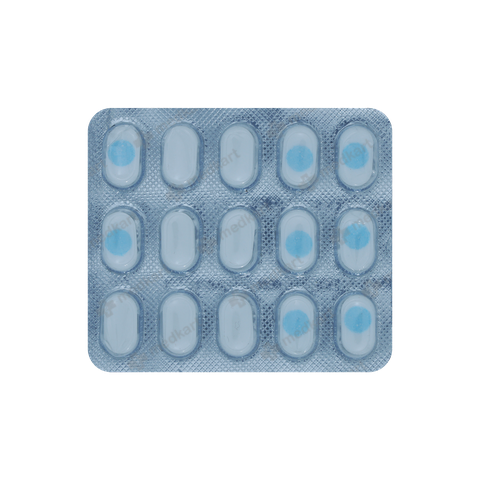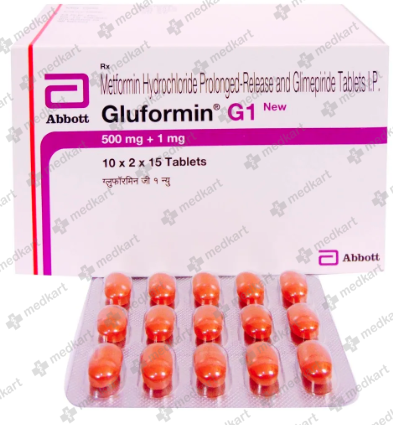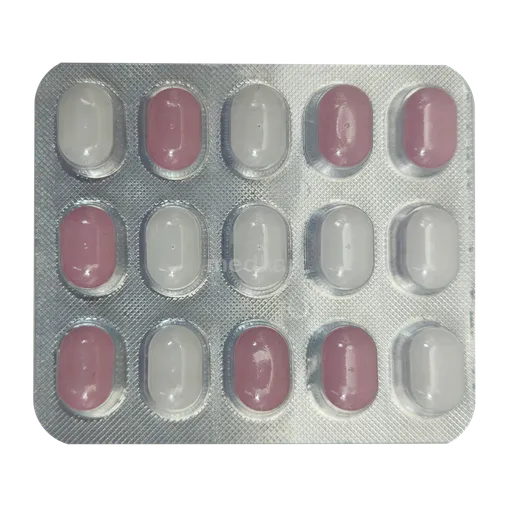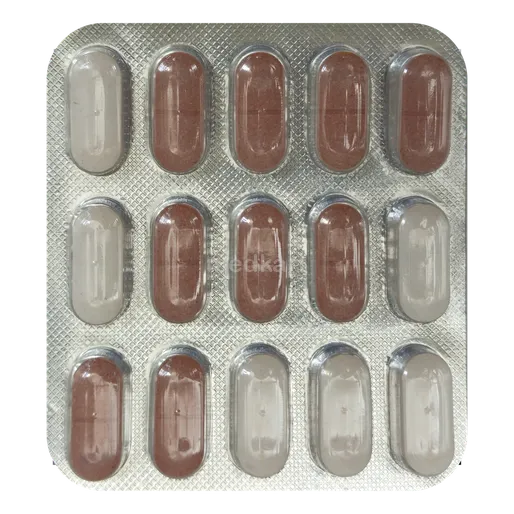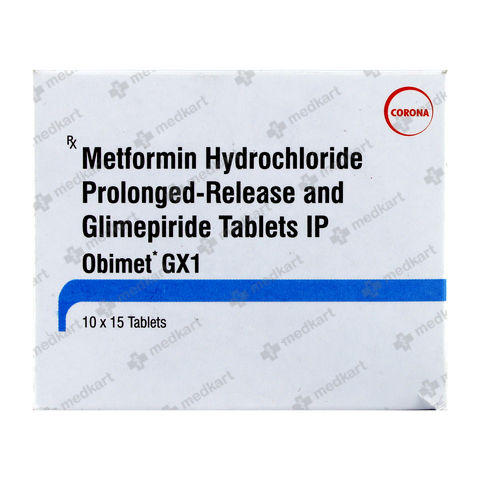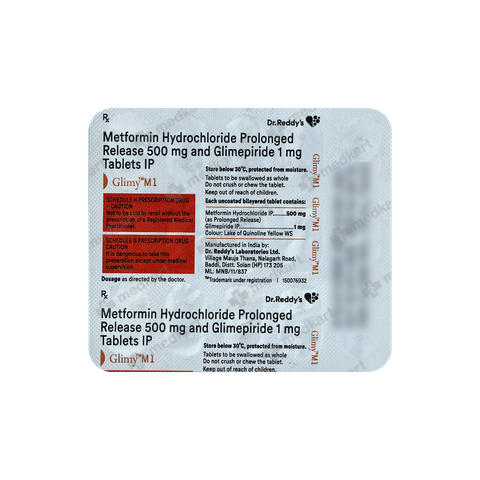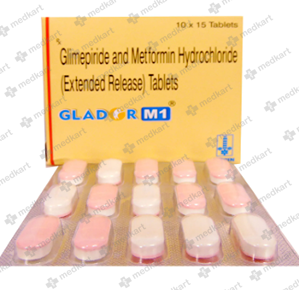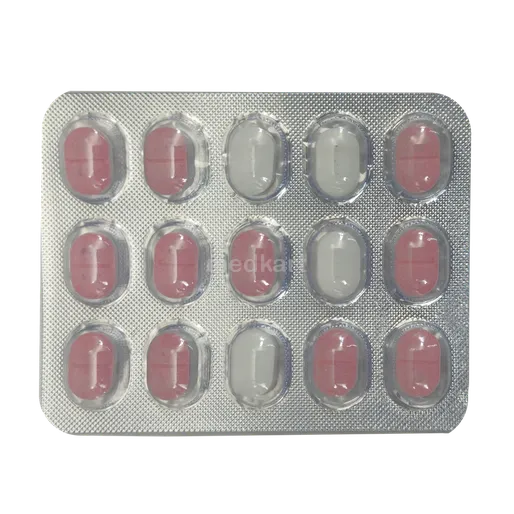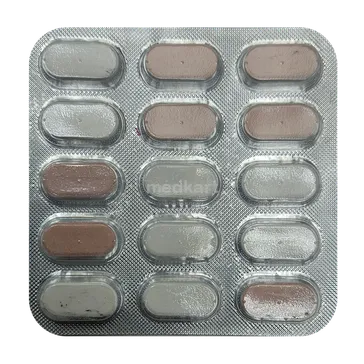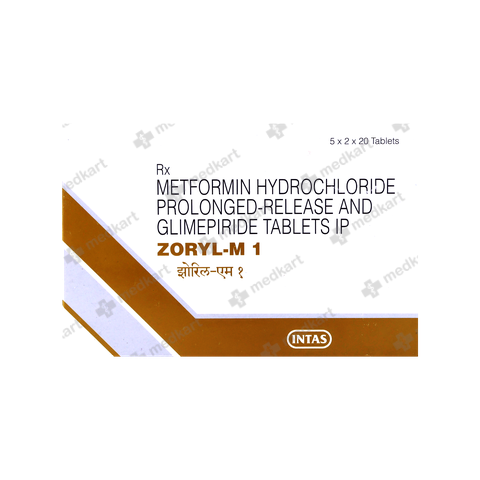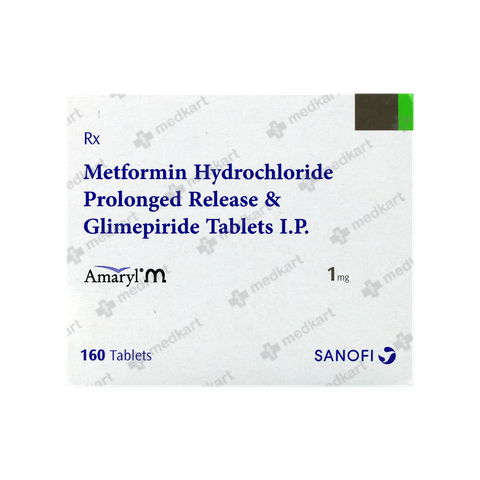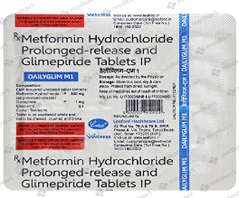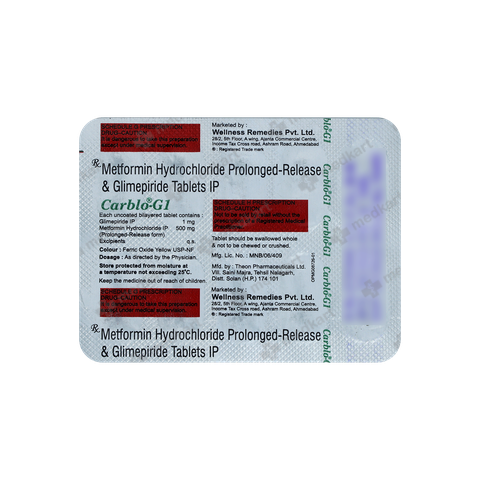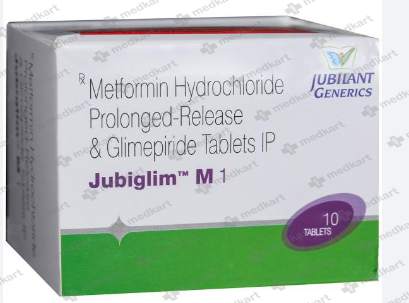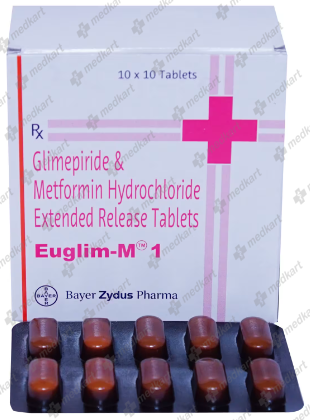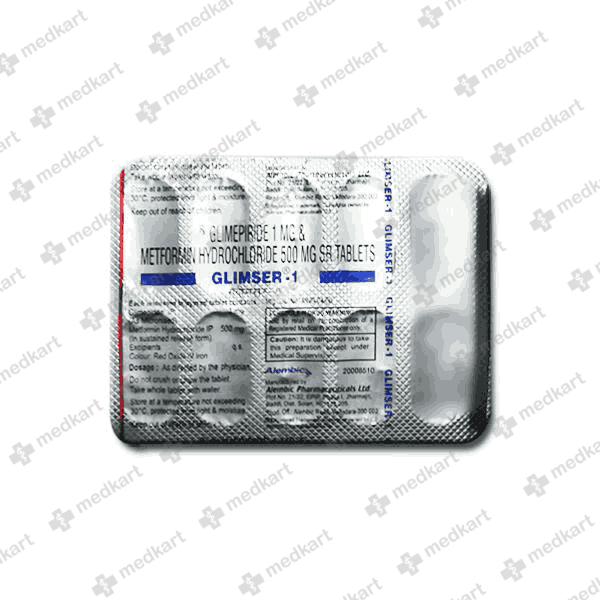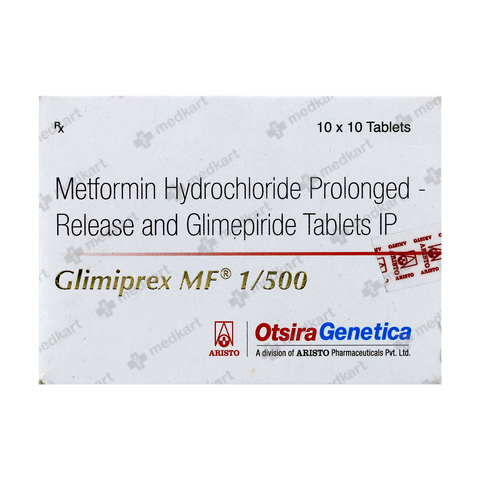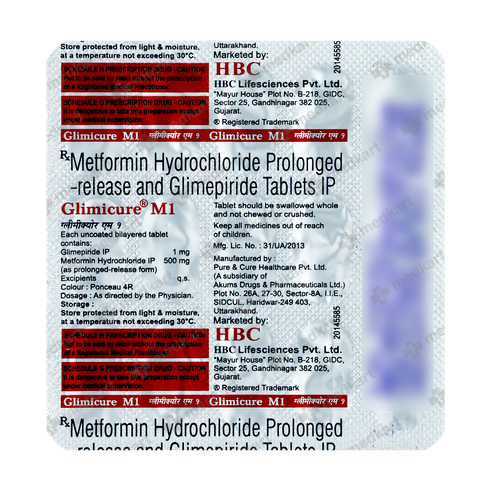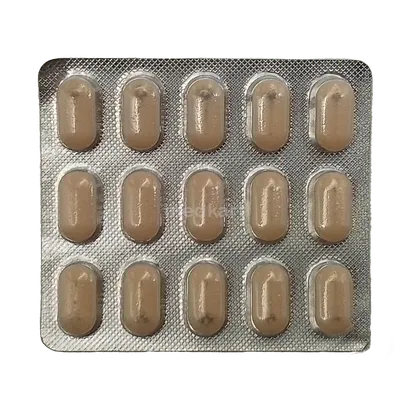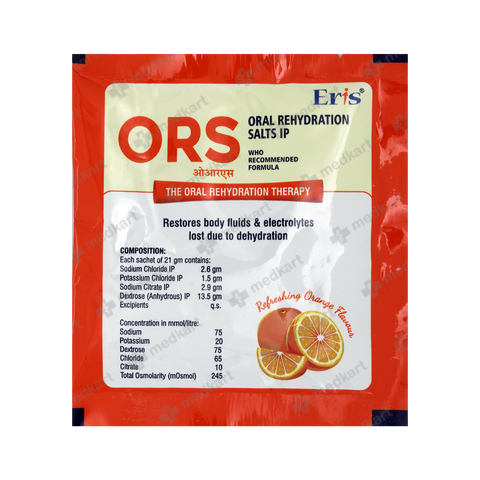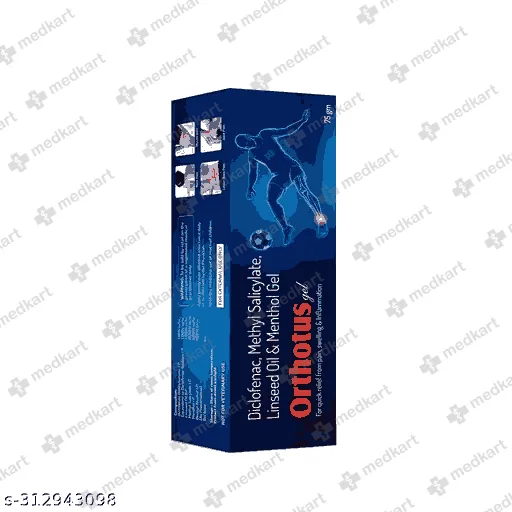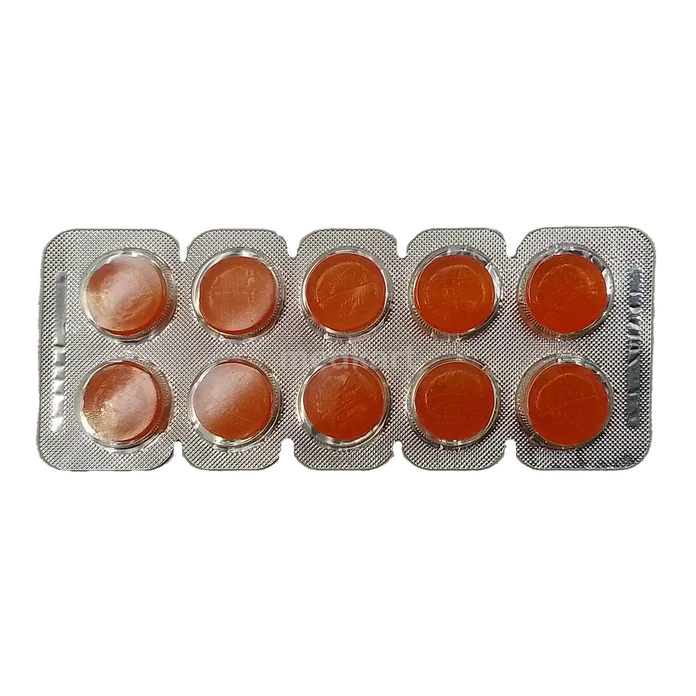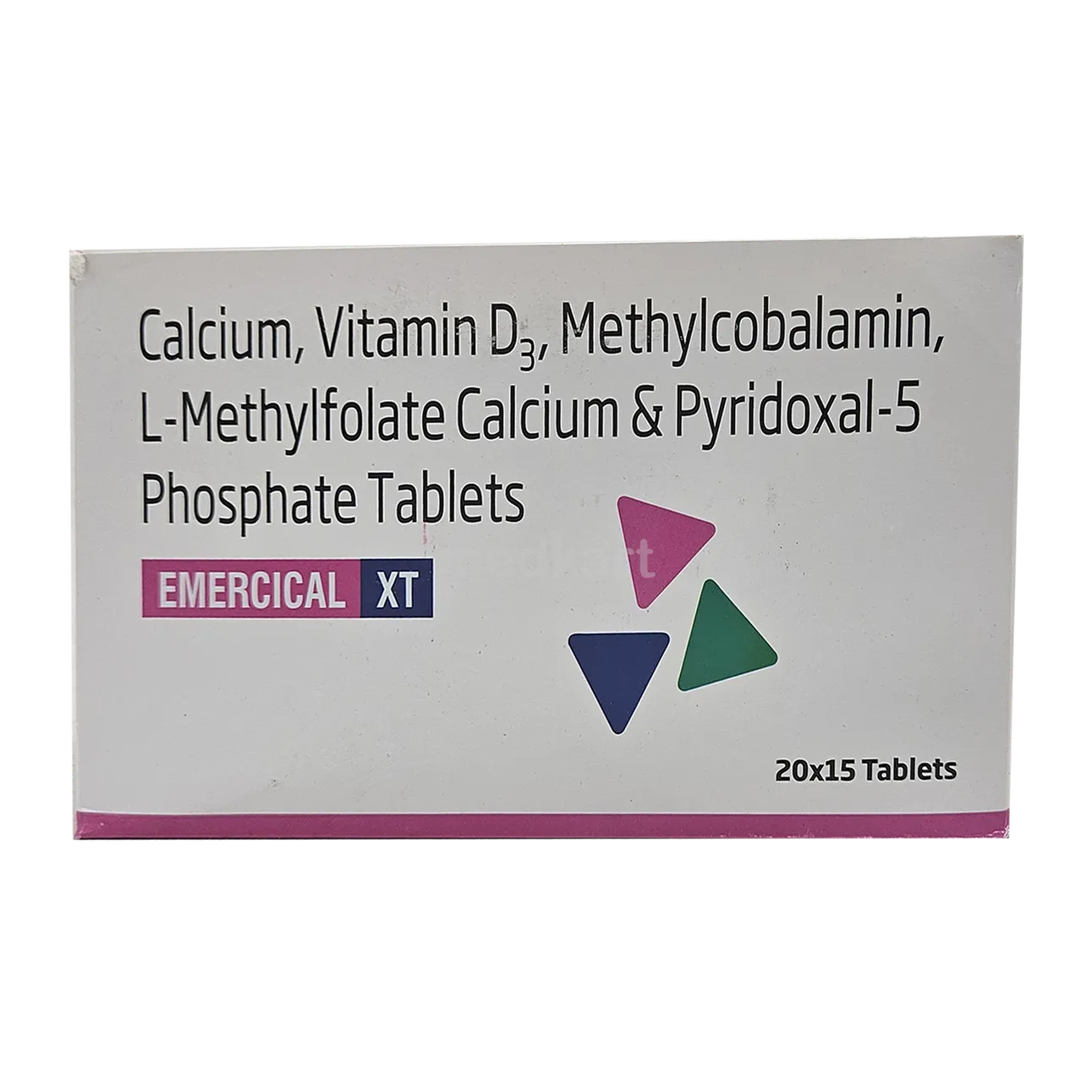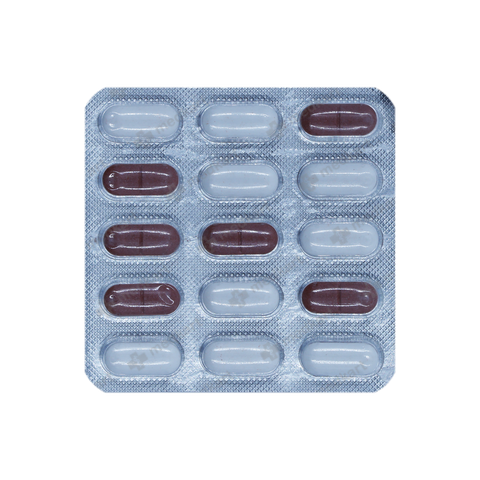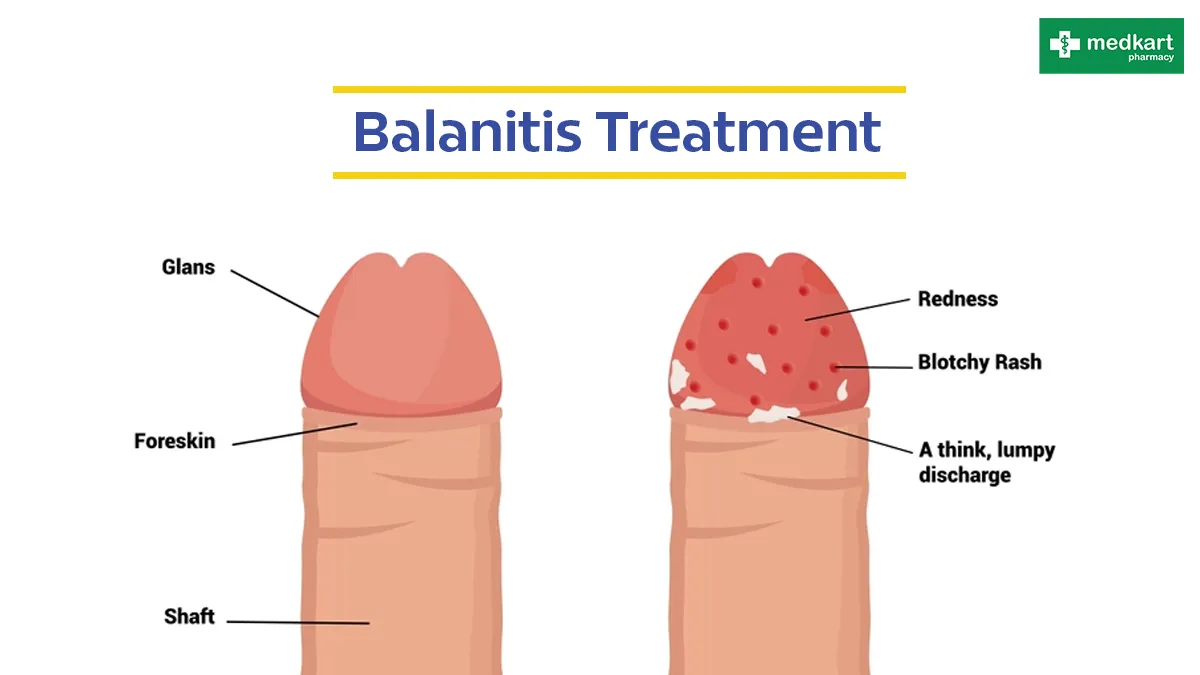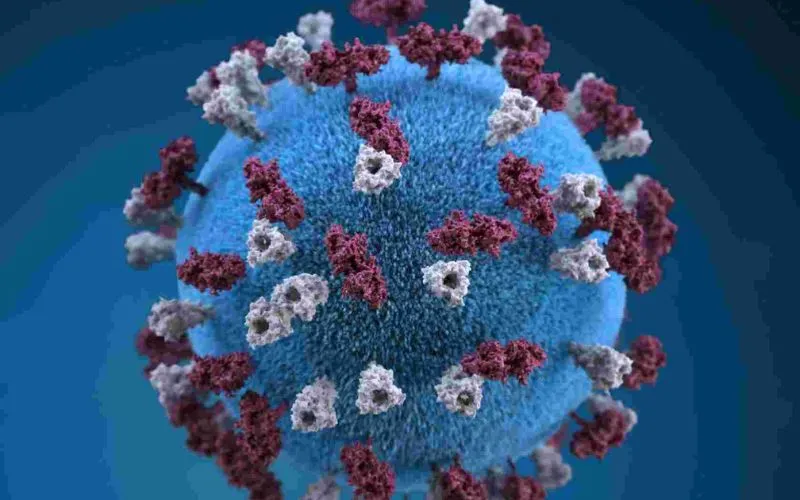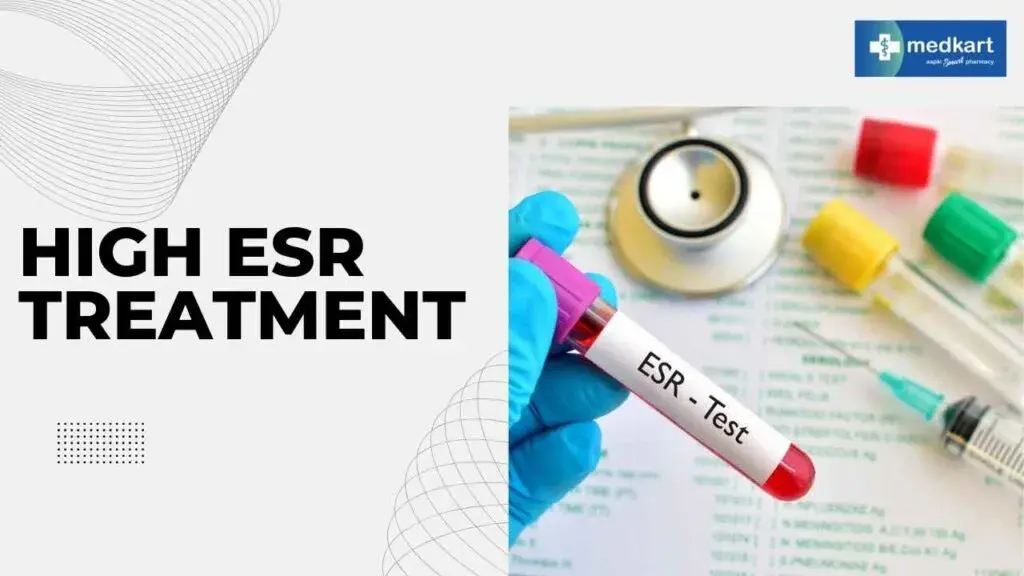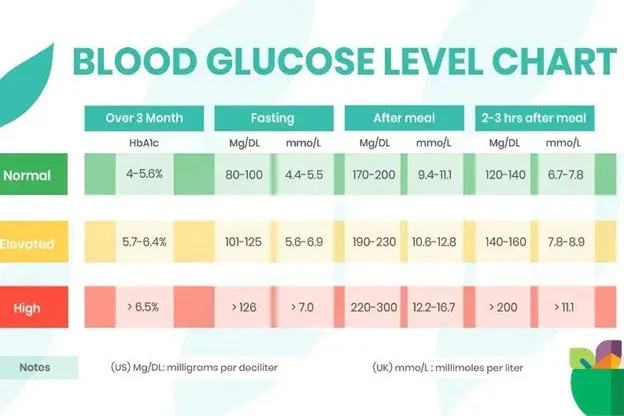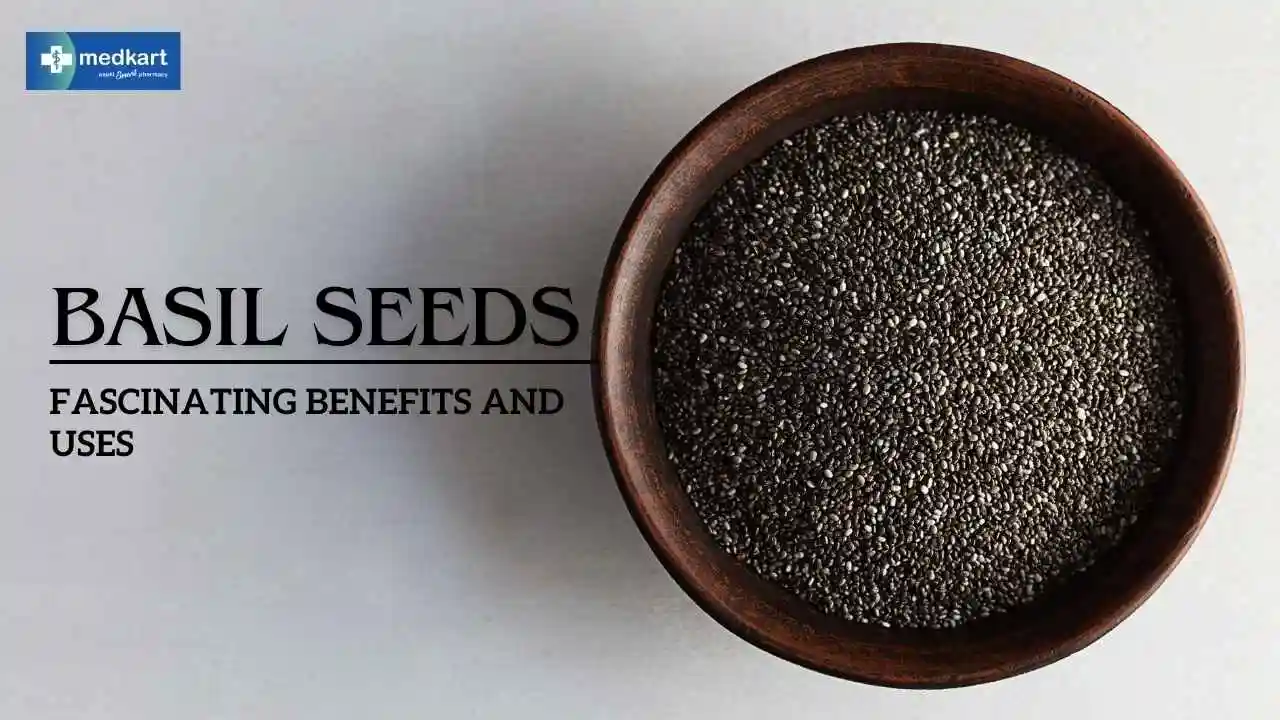Prescription Required

Authentic Product

India's Leading Generic Pharmacy

Secure Payment
GLYCIPHAGE G 1MG TABLET 10'S
GLYCIPHAGE G 1MG TABLET 10'S
By FRANCO-INDIAN PHARMACEUTICALS PVT LTD
MRP
₹
93.4
₹79.39
15 % OFF
₹7.94 Only /
TabletCheck Delivery
--
Product Details
About GLYCIPHAGE G 1MG TABLET 10'S
- GLYCIPHAGE G 1MG TABLET is a combination medicine used to treat type 2 diabetes mellitus when diet and exercise are not sufficient to control blood sugar levels. It combines two active ingredients: glimepiride and metformin, which work through different mechanisms to lower blood glucose.
- Glimepiride is a sulfonylurea that stimulates the pancreas to release more insulin. Insulin is a hormone that helps glucose get from the blood into cells for energy. By increasing insulin secretion, glimepiride helps lower blood sugar levels.
- Metformin is a biguanide that works by decreasing glucose production in the liver and improving the body's sensitivity to insulin. It also slows down the absorption of glucose from the intestines. This combination of effects helps to lower blood sugar levels without causing excessive insulin release.
- GLYCIPHAGE G 1MG TABLET is typically taken orally, once or twice daily, with meals. The dosage is determined by your doctor based on your individual needs and response to treatment. It's crucial to follow your doctor's instructions carefully and not to adjust the dose without consulting them. Regular monitoring of blood sugar levels is essential to ensure the medication is working effectively and to detect any potential side effects.
- Common side effects of GLYCIPHAGE G 1MG TABLET may include nausea, vomiting, diarrhea, abdominal pain, and headache. Hypoglycemia (low blood sugar) is also a potential side effect, especially if you miss a meal or exercise strenuously. It's important to be aware of the symptoms of hypoglycemia and to carry a source of fast-acting sugar, such as glucose tablets or fruit juice, in case it occurs. This medication is contraindicated in patients with severe kidney or liver problems, diabetic ketoacidosis, or known hypersensitivity to any of its ingredients. Always inform your doctor about any other medications you are taking, as drug interactions can occur.
Uses of GLYCIPHAGE G 1MG TABLET 10'S
- Treatment of type 2 diabetes mellitus
- Lowering high blood sugar levels
- Improving insulin sensitivity
- Management of polycystic ovary syndrome (PCOS)
- Reducing the risk of heart disease (in some cases)
- Aiding in weight management (in some patients)
How GLYCIPHAGE G 1MG TABLET 10'S Works
- GLYCIPHAGE G 1MG TABLET 10'S is a combination medication designed to manage type 2 diabetes effectively. It contains two active ingredients: Glimepiride and Metformin. Each component works through different mechanisms to lower blood sugar levels and improve glycemic control.
- Glimepiride belongs to a class of drugs called sulfonylureas. It primarily works by stimulating the beta cells in the pancreas to release more insulin. Insulin is a hormone that helps glucose (sugar) move from the blood into cells, where it's used for energy. By increasing insulin secretion, glimepiride helps lower blood sugar levels, especially after meals.
- Metformin, on the other hand, is a biguanide. It works in several ways to reduce blood sugar. First, it decreases the amount of glucose produced by the liver. The liver can sometimes release excess glucose into the bloodstream, especially in people with diabetes. Metformin helps to regulate this process. Second, metformin improves the body's sensitivity to insulin. This means that the cells are better able to use the insulin that is available, allowing more glucose to enter and be used for energy. Third, metformin slows down the absorption of glucose from the intestines after a meal, which helps to prevent sharp spikes in blood sugar levels.
- The combination of glimepiride and metformin in GLYCIPHAGE G 1MG TABLET 10'S provides a dual approach to managing blood sugar. Glimepiride helps to increase insulin secretion, while metformin helps to reduce glucose production by the liver, improve insulin sensitivity, and decrease glucose absorption in the intestines. This synergistic effect often results in better blood sugar control than either medication alone.
- It's important to note that GLYCIPHAGE G 1MG TABLET 10'S is most effective when used in conjunction with a healthy diet and regular exercise. These lifestyle modifications can significantly improve blood sugar control and overall health. Patients should follow their doctor's instructions carefully and monitor their blood sugar levels regularly to ensure that the medication is working effectively and to adjust the dosage if needed. Regular monitoring also helps in identifying and managing any potential side effects.
- Furthermore, adherence to the prescribed dosage and timing of GLYCIPHAGE G 1MG TABLET 10'S is crucial for optimal results. Missing doses or taking the medication inconsistently can lead to fluctuations in blood sugar levels, which can increase the risk of complications. Patients should also inform their doctor about any other medications they are taking, as some drugs can interact with glimepiride and metformin. Common side effects may include nausea, diarrhea, and stomach upset, but these are usually mild and temporary. In rare cases, metformin can cause a serious condition called lactic acidosis, so it's important to be aware of the symptoms and seek medical attention immediately if they occur.
- In summary, GLYCIPHAGE G 1MG TABLET 10'S works by combining the actions of glimepiride and metformin to improve insulin secretion, reduce liver glucose production, enhance insulin sensitivity, and decrease intestinal glucose absorption, leading to better blood sugar control in patients with type 2 diabetes.
Side Effects of GLYCIPHAGE G 1MG TABLET 10'S
Common side effects of GLYCIPHAGE G 1MG TABLET may include nausea, vomiting, diarrhea, abdominal pain, loss of appetite, and metallic taste. Less common but potentially serious side effects can include lactic acidosis (symptoms may include rapid breathing, stomach pain, and feeling weak), hypoglycemia (low blood sugar, symptoms may include sweating, shaking, rapid heartbeat), allergic reactions (rash, itching, swelling), and abnormalities in liver function tests. Other possible side effects are headache and dizziness. Consult your doctor immediately if you experience any severe or persistent side effects.
Safety Advice for GLYCIPHAGE G 1MG TABLET 10'S

Allergies
AllergiesDo not use GLYCIPHAGE G 1MG TABLET 10'S if you are allergic to it.
Dosage of GLYCIPHAGE G 1MG TABLET 10'S
- The dosage of GLYCIPHAGE G 1MG TABLET 10'S must be individualized based on both the patient's current glycemic control and tolerability. Typically, the initial dosage is one tablet once or twice daily, administered with meals. The maximum recommended daily dose is usually two tablets, but this can vary based on individual response and doctor's advice.
- It is crucial to monitor blood glucose levels regularly to determine the effectiveness of the medication and to adjust the dosage accordingly. Dosage adjustments should be made gradually to minimize gastrointestinal side effects.
- For patients switching from other oral antidiabetic agents to GLYCIPHAGE G 1MG TABLET 10'S, the previous medication should be discontinued, and GLYCIPHAGE G 1MG TABLET 10'S should be initiated at the lowest recommended dose. Then the dosage should be titrated as described above.
- In elderly patients, the initial and maintenance dosing should be conservative, due to the potential for decreased renal function. Generally, elderly, debilitated, and malnourished patients should not be titrated to the maximum dose.
- Patients should be informed about the importance of adhering to dietary recommendations and regular exercise while taking GLYCIPHAGE G 1MG TABLET 10'S. This medication should be taken with food to decrease the chances of upset stomach. Consistent timing of medication with meals is also important to maintain stable blood sugar levels.
- If a dose is missed, it should be taken as soon as the patient remembers, unless it is almost time for the next dose. In that case, the missed dose should be skipped, and the regular dosing schedule should be resumed. Double doses should be avoided to prevent hypoglycemia.
- Take 'GLYCIPHAGE G 1MG TABLET 10'S' only as per the prescription by your physician only
What if I miss my dose of GLYCIPHAGE G 1MG TABLET 10'S?
- If you miss a dose of GLYCIPHAGE G 1MG TABLET 10'S, take it as soon as you remember. However, if it is almost time for your next dose, skip the missed dose and continue with your regular dosing schedule. Do not double the dose to make up for the missed one.
How to store GLYCIPHAGE G 1MG TABLET 10'S?
- Keep GLYCIPHAGE G 1MG TAB 1X10 away from the reach of children and pets.
- Store GLYCIPHAGE G 1MG TAB 1X10 at room temperature.
Benefits of GLYCIPHAGE G 1MG TABLET 10'S
- GLYCIPHAGE G 1MG TABLET 10'S is a combination medicine used to treat type 2 diabetes mellitus. It improves blood sugar control and helps prevent serious complications of diabetes like kidney damage, blindness, nerve problems, loss of limbs, and sexual function problems. Effective blood sugar control is an essential part of diabetes management.
- The primary benefit of GLYCIPHAGE G 1MG TABLET 10'S lies in its dual-action mechanism. Metformin, a biguanide, works by decreasing glucose production in the liver and improving insulin sensitivity, allowing cells to utilize glucose more effectively. Glimepiride, a sulfonylurea, stimulates the pancreas to release more insulin. This synergistic effect leads to better blood sugar regulation than either medication could achieve alone.
- By effectively managing blood sugar levels, GLYCIPHAGE G 1MG TABLET 10'S helps reduce the risk of long-term complications associated with diabetes. These complications can include cardiovascular problems such as heart attacks and strokes, nerve damage (neuropathy) leading to pain and numbness, kidney damage (nephropathy) potentially leading to kidney failure, and eye damage (retinopathy) that can result in blindness. Proper glucose control is vital for preventing or delaying these debilitating conditions.
- Beyond its impact on blood sugar and long-term complications, GLYCIPHAGE G 1MG TABLET 10'S can also improve overall well-being. Many individuals with diabetes experience fatigue and low energy levels due to fluctuating blood sugar. By stabilizing glucose levels, this medication can help restore energy and improve daily functioning. This can translate into increased productivity, better mood, and an enhanced quality of life.
- GLYCIPHAGE G 1MG TABLET 10'S may also contribute to modest weight management. While not specifically a weight-loss drug, metformin, one of its active ingredients, has been shown to have a neutral or slightly positive effect on weight. This can be a significant advantage for individuals with type 2 diabetes, as obesity often exacerbates the condition. Maintaining a healthy weight is an integral part of diabetes management, and GLYCIPHAGE G 1MG TABLET 10'S can indirectly support this goal.
- Another important benefit is the convenience of a combination medication. Taking a single tablet containing both metformin and glimepiride simplifies the treatment regimen, improving adherence and making it easier for patients to manage their diabetes effectively. This can be especially helpful for individuals who struggle with taking multiple medications throughout the day. Improved adherence leads to better blood sugar control and reduced risk of complications.
- Furthermore, GLYCIPHAGE G 1MG TABLET 10'S, when used under the guidance of a healthcare professional and in conjunction with lifestyle modifications like diet and exercise, empowers individuals to take control of their diabetes management. It is not a replacement for healthy habits, but rather a tool to support and enhance their effectiveness. Consistent monitoring of blood sugar levels, regular check-ups, and open communication with your doctor are essential for optimizing the benefits of this medication.
- In summary, GLYCIPHAGE G 1MG TABLET 10'S offers a comprehensive approach to managing type 2 diabetes by controlling blood sugar, reducing the risk of long-term complications, improving energy levels, potentially aiding in weight management, and simplifying the treatment regimen. Its effectiveness is maximized when combined with a healthy lifestyle and close monitoring by a healthcare provider.
How to use GLYCIPHAGE G 1MG TABLET 10'S
- GLYCIPHAGE G 1MG TABLET 10'S is an oral antidiabetic medication that combines metformin and a sulfonylurea (glimepiride) to help manage blood sugar levels in individuals with type 2 diabetes. To maximize its effectiveness and minimize potential side effects, it's crucial to adhere to your doctor's instructions and the guidelines provided below.
- The usual starting dose is one tablet once or twice daily, preferably with meals. Your doctor may adjust the dosage based on your blood glucose levels and individual response to the medication. It's important to take the tablet at the same time(s) each day to maintain consistent blood sugar control.
- Swallow the tablet whole with a full glass of water. Do not crush, chew, or break the tablet, as this can affect the way the medication is released into your body. Taking GLYCIPHAGE G 1MG TABLET 10'S with food helps to reduce the risk of stomach upset, a common side effect of metformin. Follow the diet and exercise plan recommended by your doctor or diabetes educator while taking this medication. Regular physical activity and a balanced diet are essential for managing type 2 diabetes effectively.
- Continue taking GLYCIPHAGE G 1MG TABLET 10'S as long as your doctor prescribes it. Do not stop taking the medication without consulting your doctor, even if you feel better or your blood sugar levels are well-controlled. Suddenly stopping the medication can lead to a rise in blood sugar levels.
- If you miss a dose, take it as soon as you remember. However, if it is almost time for your next dose, skip the missed dose and continue with your regular dosing schedule. Do not double the dose to make up for a missed one. Store GLYCIPHAGE G 1MG TABLET 10'S at room temperature, away from moisture and heat. Keep the medication out of the reach of children.
Quick Tips for GLYCIPHAGE G 1MG TABLET 10'S
- Take GLYCIPHAGE G 1MG TABLET 10'S exactly as prescribed by your doctor. Do not change the dosage or stop taking the medication without consulting your healthcare provider. Consistency is key to managing blood sugar effectively. GLYCIPHAGE G 1MG TABLET 10'S works best when taken at the same time each day, ideally with meals, to minimize gastrointestinal side effects and maximize its effectiveness in controlling blood glucose levels throughout the day.
- Maintain a consistent and balanced diet while taking GLYCIPHAGE G 1MG TABLET 10'S. Focus on incorporating whole grains, lean proteins, and plenty of fruits and vegetables into your meals. Avoid excessive sugar and processed foods, which can negatively impact your blood sugar levels. A healthy diet complements the medication's effects, leading to better overall glycemic control and improved health outcomes.
- Regular physical activity is crucial for managing diabetes and enhancing the effects of GLYCIPHAGE G 1MG TABLET 10'S. Aim for at least 30 minutes of moderate-intensity exercise most days of the week. Activities like brisk walking, cycling, or swimming can significantly improve insulin sensitivity and help lower blood sugar levels. Combining exercise with medication and diet provides a synergistic approach to diabetes management.
- Monitor your blood sugar levels regularly as directed by your doctor. Keeping a log of your blood glucose readings can help you and your healthcare provider assess how well GLYCIPHAGE G 1MG TABLET 10'S is working for you. This information can also help identify patterns and make necessary adjustments to your diet, exercise routine, or medication dosage. Consistent monitoring empowers you to take control of your diabetes management.
- Be aware of the potential side effects of GLYCIPHAGE G 1MG TABLET 10'S, such as nausea, diarrhea, or abdominal discomfort. These side effects are usually mild and temporary, but if they persist or worsen, contact your doctor. It's also important to recognize the symptoms of hypoglycemia (low blood sugar), such as shakiness, sweating, and confusion, and know how to treat it promptly. Discuss any concerns or unusual symptoms with your healthcare provider to ensure safe and effective use of the medication.
Food Interactions with GLYCIPHAGE G 1MG TABLET 10'S
- GLYCIPHAGE G 1MG TABLET 10'S is generally safe to take with food. However, it's best to take it with your main meals to help reduce the chances of stomach upset. Avoid excessive alcohol consumption while taking this medicine, as it can increase the risk of low blood sugar (hypoglycemia). Consistent meal timings are recommended for better blood sugar control.
FAQs
What is Glyciphage G 1mg Tablet 10's?

Glyciphage G 1mg Tablet 10's is a medication used to treat type 2 diabetes. It contains a combination of glimepiride and metformin.
What is Glyciphage G 1mg Tablet 10's used for?

Glyciphage G 1mg Tablet 10's is used to control high blood sugar levels in people with type 2 diabetes, when diet and exercise alone are not enough.
How does Glyciphage G 1mg Tablet 10's work?

Glyciphage G 1mg Tablet 10's works through a combination of two medications, glimepiride and metformin. Glimepiride increases the release of insulin from the pancreas, while metformin reduces the amount of glucose produced by the liver and improves the body's sensitivity to insulin.
What are the common side effects of Glyciphage G 1mg Tablet 10's?

Common side effects of Glyciphage G 1mg Tablet 10's include nausea, vomiting, diarrhea, stomach pain, and headache.
Are there any serious side effects of Glyciphage G 1mg Tablet 10's?

Serious side effects of Glyciphage G 1mg Tablet 10's may include lactic acidosis (a buildup of lactic acid in the blood), hypoglycemia (low blood sugar), and allergic reactions. Seek immediate medical attention if you experience any of these side effects.
How should I take Glyciphage G 1mg Tablet 10's?

Take Glyciphage G 1mg Tablet 10's exactly as prescribed by your doctor. It is usually taken once or twice daily with meals.
What happens if I miss a dose of Glyciphage G 1mg Tablet 10's?

If you miss a dose of Glyciphage G 1mg Tablet 10's, take it as soon as you remember. However, if it is almost time for your next dose, skip the missed dose and continue with your regular dosing schedule. Do not double the dose.
Should Glyciphage G 1mg Tablet 10's be taken with food?

Yes, Glyciphage G 1mg Tablet 10's should be taken with food to help reduce the risk of stomach upset.
Is Glyciphage G 1mg Tablet 10's safe during pregnancy?

The safety of Glyciphage G 1mg Tablet 10's during pregnancy has not been established. Consult your doctor before taking this medication if you are pregnant or planning to become pregnant.
Is Glyciphage G 1mg Tablet 10's safe during breastfeeding?

It is not known whether Glyciphage G 1mg Tablet 10's passes into breast milk. Consult your doctor before taking this medication while breastfeeding.
Can Glyciphage G 1mg Tablet 10's interact with other medications?

Yes, Glyciphage G 1mg Tablet 10's can interact with other medications, including insulin, certain high blood pressure medications, and some antifungal medications. Tell your doctor about all the medications you are taking before taking this medication.
Can I drink alcohol while taking Glyciphage G 1mg Tablet 10's?

Drinking alcohol while taking Glyciphage G 1mg Tablet 10's can increase the risk of hypoglycemia. Consult your doctor before drinking alcohol while taking this medication.
How should I store Glyciphage G 1mg Tablet 10's?

Store Glyciphage G 1mg Tablet 10's at room temperature, away from heat and moisture.
Does Glyciphage-G 1mg Tablet 10's cause weight gain?

Weight gain is not a common side effect of Glyciphage-G 1mg Tablet 10's. However, some people may experience it. Talk to your doctor if you are concerned about weight gain while taking this medication.
What is the difference between Glimisave M 1mg Tablet and Glyciphage G 1mg Tablet 10's?

Both Glimisave M 1mg Tablet and Glyciphage G 1mg Tablet 10's contain glimepiride and metformin, but the manufacturers are different. Follow your doctor's instructions regarding dosage and other directions.
Ratings & Review
Excellent service & approach
Raju Palkhade
•
Reviewed on 18-01-2024
(5/5)
Medicines available at good discounted rates and it really help the pockets of the customer...even they help in getting medicines when you order and give your number ..
Pashupati Nath Pandey
•
Reviewed on 03-02-2024
(5/5)
Good discounts available for all medicine.
Akash Patel
•
Reviewed on 01-12-2023
(4/5)
Good service in all medicines availability and specially in generic medicines. Very cheapest price to buy generic medicines at naroda area. saving money. Thank you medkart
Keyur Patel
•
Reviewed on 09-01-2024
(5/5)
Best customer service and discount
AkshaY Sompura
•
Reviewed on 02-01-2024
(5/5)
Marketer / Manufacturer Details
FRANCO-INDIAN PHARMACEUTICALS PVT LTD
Country of Origin -
India
Alternatives
Customer Also Bought
Related Blogs
Disclaimer
Medkart's sole intention is to ensure that its consumers get information that is expert-reviewed, accurate and trustworthy. However, the information contained herein should NOT be used as a substitute for the advice of a qualified physician. The information provided here is for informational purposes only. This may not cover everything about particular health conditions, medicines, generic alternatives, all possible side effects, drug interactions, warnings, alerts, lab tests, etc. Please consult your doctor and discuss all your queries related to any disease or medicine. We intend to support, not replace, the doctor-patient relationship.
India's most trusted generic medicine pharmacy.
10 Lakh+
Happy customers
35000+
Pin-codes Covered
75 Lakh+
Orders Delivered

Authentic Products
All WHO-GMP Certified Medicines
About Medkart Pharmacy
Our Services
Download the app for free
©2025 Medkart Pharmacy. All Rights Reserved
